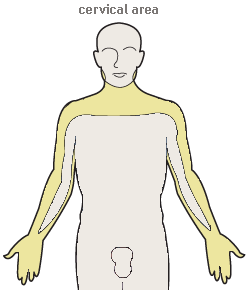After spinal cord injury, the bowel will no longer work like before the injury. If the injury is located at T12 or higher, the bowel will empty by a reflex. It will be called a "reflex bowel." This means that when the rectal vault is full of stool, it will increase the pressure and then stool will be pushed out. The key to continence is to empty the rectal vault before it becomes too full and pushes stool out at an unacceptable time.


If the injury is at L1 or below it will not cause a reflex to happen. This type of bowel is called the "non-reflex bowel." There are differences between reflex and non reflex bowels and the type of program that works best.


The Reflex Bowel (T 12 injuries or higher)
1. The rectum gets full of stool, stretches and pushes on area nerves.
2. A message is sent from the bowel to the sacral nerves and then to the cord.
3. When the message reaches the cord, it loops around in the cord setting off a reflex.
4. The reflex tells the sphincter muscle (near the anus) to open and let the stool out of the body.
Because the cord is injured, the rest of the message does not reach the brain. The message stays in the cord.
This is different because now the brain does not send a message down the cord to tell it whether or not it is a good time to empty the bowel. The reflex "allows" the muscle to open when it feels full.
The bowel program for a "reflex bowel" is a dil (digital stimulation) and/or a suppository depending on a person's level of feeling near his/her anus/rectum. See the lessons in this module called "Digital Stimulation" and "Suppositories."
The Non-Reflex Bowel (for L1 Injuries or lower)
1. The rectum fills with stool, stretches and pushes on area nerves.
2. A signal is sent from the bowel to the sacral nerves where it then tries to reach the cord.
3. The signal never reaches the cord because the cord ends at around L1 or L2. When the injury is below where the cord ends, the signals are not able to travel inside the cord.
Because the signal is not able to reach the cord, no reflex happens and the bowel does not squeeze. The sphincter muscle remains loose so if too much stool collects in the rectum, it will come out.
This is different from the "reflex bowel" because the signal cannot reach the cord to cause the reflex. It also cannot reach the brain. This means that the brain cannot tell the body when it is a good time to have a B.M. Without the reflex, the bowel empties whenever the rectal vault becomes too full to contain the contents.
The bowel program for a "non-reflex bowel" is a manual evacuation with or without a suppository. See the lessons in this module entitled "Manual Evacuation" and "Suppositories."


